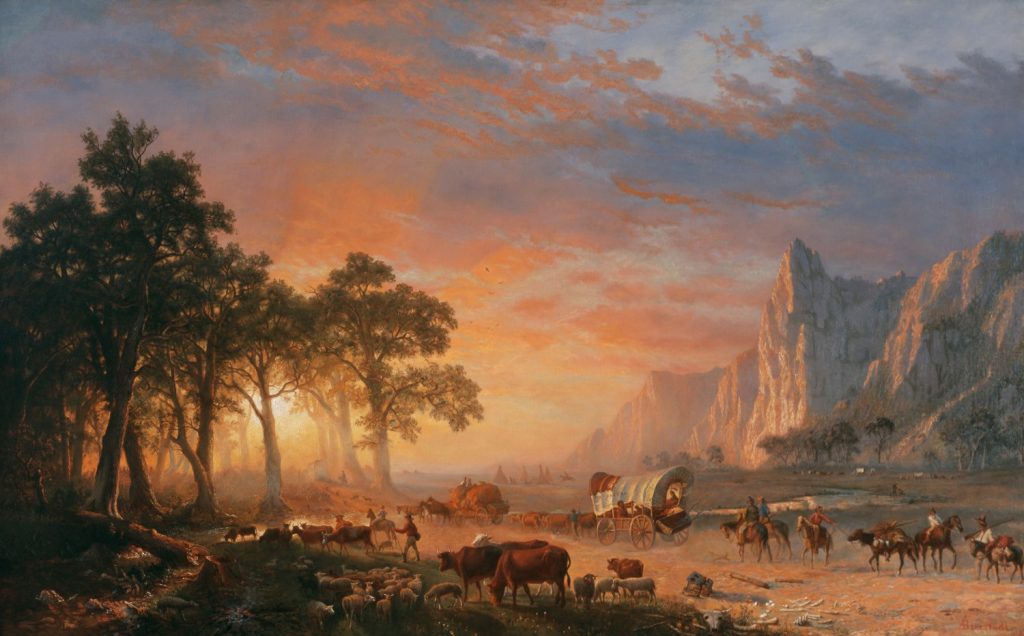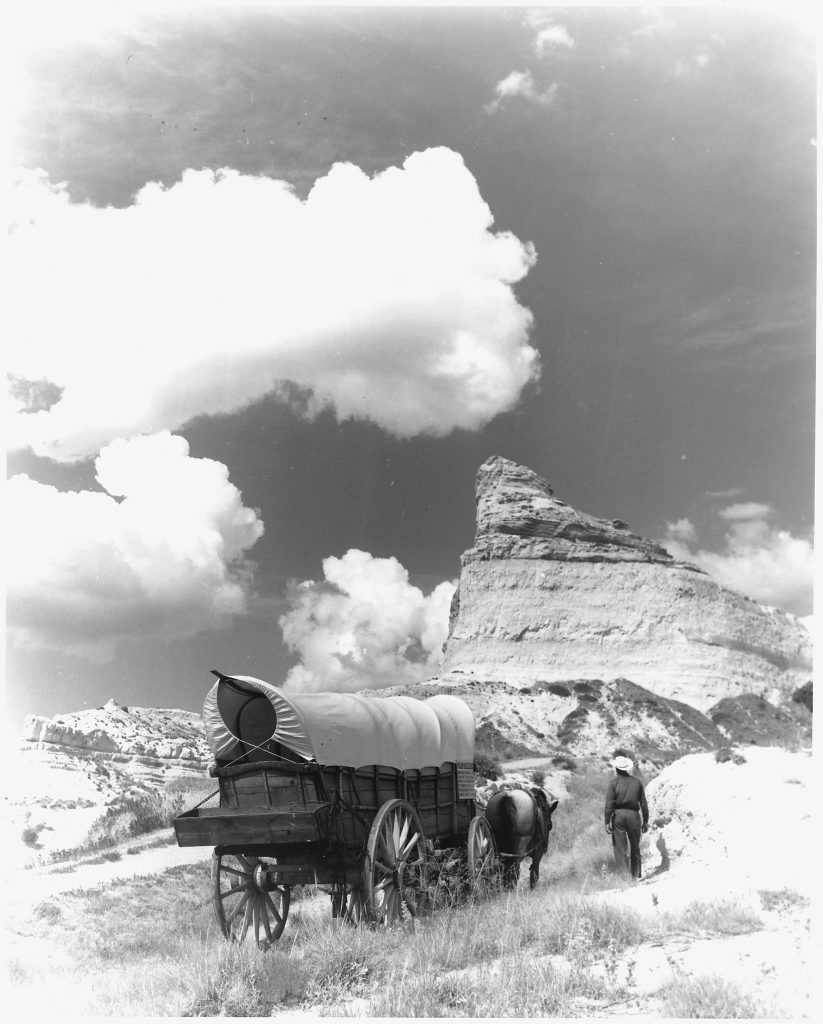InTrans / Feb 24, 2017
Final frontiers: The Oregon Trail
Go! Magazine
 posted on February 24, 2017
posted on February 24, 2017
Exploring uncharted territories can be a risky business. These predominantly unexplored lands—like outer space and the deep sea—are known as “final frontiers.” But to truly understand these final frontiers and what they mean for us today, we have to understand the frontiers of days past.
In present day United States, the original final frontier was the western half of the country: the great American West. Pioneers in the 19th century used trails like roadways to travel across the Great Plains, emigrating in wagons across the frontier in search of the perfect piece of land.
The Oregon Trail
Have you heard of the Oregon Trail?
One of the most famous wagon trails across the United States in the 1800s was known as the Oregon Trail or the Oregon-California Trail. Stretching over 2,000 miles from modern-day Missouri to Oregon, the trail led to the promise of a better life in Oregon Country.
The Mississippi River, which borders modern-day Iowa, Missouri, Arkansas, and Louisiana, was the westernmost point of the US in 1800. But by 1846, thousands of emigrants were traveling west. The Oregon Trail was one of the two main emigrant routes to the American West; it led hundreds of thousands of Americans westward from the 1840s to the 1860s.

Survival
It was not an easy journey. The Oregon Trail crossed through difficult terrain and unfamiliar climates. The trail notably passed through large territories occupied by the native people of North America (the American Indians).
These American Indians watched the emigrants with suspicion and “the anxiety of unexpected and unwanted change to their way of life.” Many native peoples traded food and supplies to emigrant wagon groups, playing a crucial role in their survival, even offering guide services.
It was a long and arduous journey for the settlers, many of whom lost their lives along the trail. In addition to the harrowing labor of the 2,000-mile journey, water sources were often scarce and the settlers often experienced thirst and starvation, finding it impossible to live off the land the way the native people could.
Food and water needs aside, the most dreaded danger to emigrants was cholera, which spread through water supplies contaminated by human and animal waste, garbage, and animal carcasses. Cholera spread rapidly among wagon trains (a group of wagons traveling together), accounting for the most overall deaths along the Oregon Trail.
A look in time
Looking back in time at the Oregon Trail can actually give us a look into our future.
Hundreds of thousands of early American settlers traveled through the American West in the 19th century. For better or worse, these early settlers paved the way for modern life as we know it.
In the late 19th century, the development and implementation of the steam locomotive would make the Oregon Trail and other wagon trails a thing of the past; but in its prime, the Oregon Trail was the key to the future. Looking back, transportation like this seems so outdated, but for the early pioneers, this was all they knew.

In 100 or 200 years from now, future generations will look back to what is going on right now and might even say the same thing. In the meantime, what will our “American West” be? Mars? The deep sea? Only time, technology, and the right transportation will tell.
References
https://www.nps.gov/oreg/learn/historyculture/index.htm
https://www.britannica.com/topic/Oregon-Trail
Related links
The wagon: http://www.oregontrailcenter.org/HistoricalTrails/TheWagon.htm
(Video) Western Expansion: https://www.youtube.com/watch?v=Q16OZkgSXfM
By Hannah Postlethwait, Go! Staff Writer